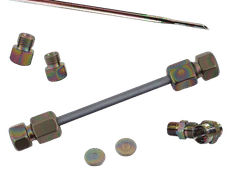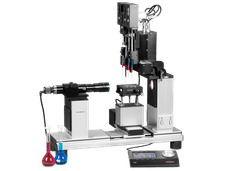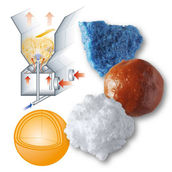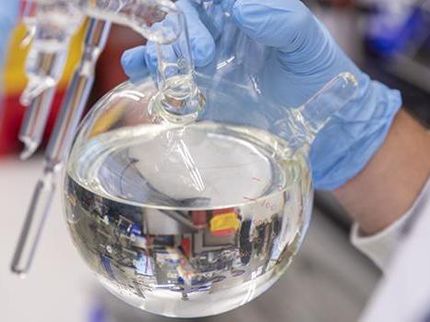Rohm and Haas Receives $2 Million National Institute of Standards Award to Develop New Family of Acrylic Polymers
Advertisement
Rohm and Haas Company has received a $2 million Advanced Technology Program award from the National Institute of Standards (NIST) for the development of new technologies that can be used to create a unique family of high performance acrylic polymers and copolymers.
Rohm and Haas will embark on a three-year effort, called Project Columbus, to develop a new platform for catalytic polymerizations. If successful, this research will complete a missing link that can enable production of special acrylic polymers that offer novel performance benefits. Catalysts are substances used in minute amounts to initiate, accelerate, or control chemical reactions that would otherwise be too slow or inefficient to be economical. In partnership with the NIST Advanced Technology Program (ATP), Rohm and Haas scientists will join with researchers from the California Institute of Technology in Pasadena to design and synthesize brand new catalysts.
"We expect the new catalysts to deliver unprecedented performance-for the first time, we'll be able to control the molecular architecture of acrylic polymers and combine the best features of acrylics with those of polyolefins," said Dr. Brian Goodall, Rohm and Haas chief scientist for catalysis. "We'll actually have the ability to control the placement of polar groups common in acrylics (the cluster of atoms that impart performance characteristics) and ultimately influence crucial performance properties, like toughness, adhesion, and surface behavior."
If successful, Project Columbus would generate not only new catalysts, but new polymers and product lines with economic, social, and environmental benefits. New "designer polymers" could lead to special applications in architectural and automotive coatings, potentially reducing the use and emissions of volatile organic compounds that currently are used for stability and flow. Other applications that might benefit from new acrylic polymers include ink jet inks, paper coatings, adhesives, and microelectronics, to name a few.
"The $2 million ATP grant is a tremendous boost to our program," said Goodall, who leads a team of chemists based at Rohm and Haas Company's major research campus in Spring House, Pennsylvania. "We're thrilled to be working with our colleagues at the California Institute of Technology to develop novel polymeric materials that will impart new performance properties to both acrylics and polyolefins-properties that until now have been impossible to produce."
Most read news
Topics
Organizations
Other news from the department science
These products might interest you

Dursan by SilcoTek
Innovative coating revolutionizes LC analysis
Stainless steel components with the performance of PEEK - inert, robust and cost-effective

OCA 200 by DataPhysics
Using contact angle meter to comprehensively characterise wetting behaviour, solids, and liquids
With its intuitive software and as a modular system, the OCA 200 answers to all customers’ needs

Tailor-made products for specific applications by IPC Process Center
Granulates and pellets - we develop and manufacture the perfect solution for you
Agglomeration of powders, pelletising of powders and fluids, coating with melts and polymers

Get the chemical industry in your inbox
By submitting this form you agree that LUMITOS AG will send you the newsletter(s) selected above by email. Your data will not be passed on to third parties. Your data will be stored and processed in accordance with our data protection regulations. LUMITOS may contact you by email for the purpose of advertising or market and opinion surveys. You can revoke your consent at any time without giving reasons to LUMITOS AG, Ernst-Augustin-Str. 2, 12489 Berlin, Germany or by e-mail at revoke@lumitos.com with effect for the future. In addition, each email contains a link to unsubscribe from the corresponding newsletter.
































































